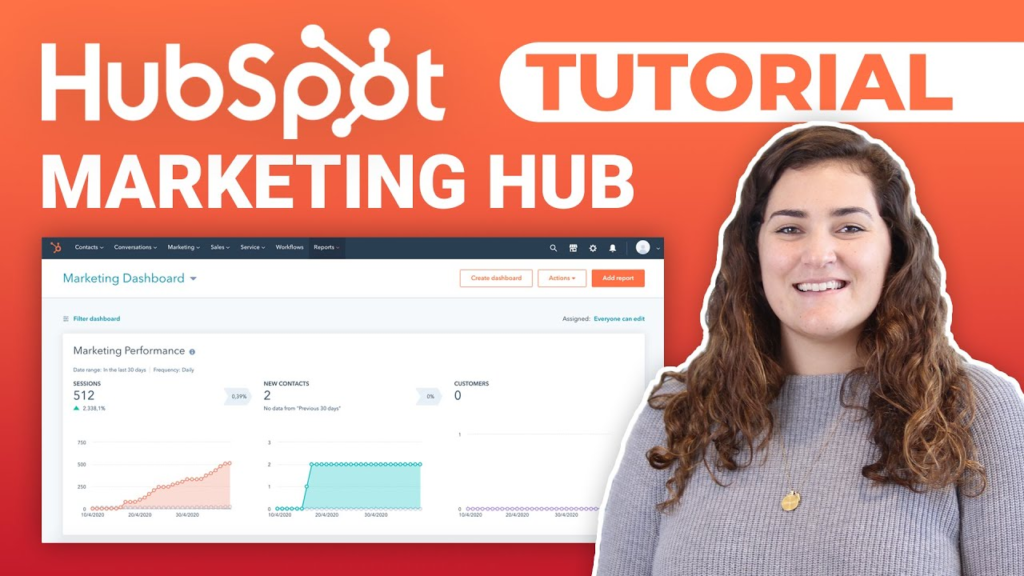6 Inbound Marketing Success Stories To Give You Some Hope

Table of Contents
- Introduction
- Why You Need an Inbound Marketing Strategy?
- 6 Inbound Success Stories to Inspire
- Key Takeaways
- Conclusion
- FAQs
Inbound marketing is an attractive and highly effective way of generating more leads and converting more potential customers, as it offers value at every stage of the customer journey. Inbound marketing is the process of helping potential buyers to find your company. As a marketing strategy, it makes use of many forms of pull marketing. These include search engine optimization, blogs, events, vlogs, social media content, and more. We have compiled the best inbound marketing examples to help you identify the importance of including this methodology in your marketing strategy.
Why Do You Need an Inbound Marketing Strategy?
You need to inculcate inbound marketing into your marketing strategy, not just because it is being used by almost every brand today. But because inbound marketing is a great way to increase your brand’s awareness and attract new potential customers. While outbound marketing aims at seeking out customers, inbound marketing’s prime focus is increased visibility. Focusing on visibility will automatically bring new buyers to your brand.
Companies that have employed inbound marketing, have experienced better brand awareness, developed meaningful relationships with their customers, and have been able to generate more leads. Here are a few reasons why you need an inbound marketing strategy:
- With inbound marketing, you can organically increase your brand awareness.
- Since it is a long-term investment, you can start by investing less to generate more leads.
- If you want to improve your brand preference, you need to educate, entertain as well as effectively interact with your potential buyers. This increases your chances of being chosen or preferred by them, as a brand. Inbound marketing makes this highly possible.
6 Inbound Success Stories to Inspire
Let’s learn from the best inbound marketing examples by understanding the tactics used by the brands that created some really aspirational inbound marketing success stories.
1. Binging With Babish
Owned and run by Oliver Babish, the Youtube channel ‘Binging With Babish’ is a place where you can find cooking recipes. But these recipes are inspired by traditional and pop culture and are extremely enjoyable and fun to watch. These videos are free to watch on Youtube. Wondering, how the money is generated then? Well, Binging With Babish, uses these videos as a part of the channel’s inbound strategy.

The video tutorials provided by Oliver Babish on his channel help customers find new and interesting information and attract them to check the website. That’s where the real revenue comes from cookbooks, product endorsements, merchandise, that are already present on the website. This inbound marketing strategy examples in a well-known revenue model several such personal brands across the globe.
2. L’Oreal Malaysia
One of the best inbound marketing examples, L’Oreal Malaysia’s Raya campaign is worth studying. A few years ago, the ‘Raya Cantik Bergaya’ campaign gave L’Oreal Malaysia stunningly positive social metrics. They crossed the industry benchmark, gaining 500 times more engagement on their website than any other competitor campaign. What made their inbound strategy a story of success was the careful inclusion of using Key Opinion Leaders as a part of the strategy, in order to retain the brand name in the buyer’s memory.
3. HubSpot
Next on the list of inbound marketing examples to learn from is Hubspot. Known for coining the term ‘inbound marketing’, HubSpot has truly mastered it as well. They are one of the most esteemed inbound partners on the internet today. HubSpot includes a number of elements in its inbound marketing strategy like video tutorials, customer testimonials, vlogs, free trials, email marketing, information and videos about events, etc.

Their social media is equally well-equipped with inbound tactics. Which results in better traffic to their site and more engagement with their content across different platforms.
4. Lalamove
Lalamove has used inbound marketing contrary to the other companies in the delivery industry, which highly rely on outbound marketing. With inbound marketing, Lalamove has managed to attract as well as retain customers. Their inbound strategy includes blog articles and email newsletters that address the problems of their buyers and offer solutions for the same.
5. Neil Patel
Neil Patel is one of the few individuals who have successfully used inbound marketing and has earned the credibility of being the master of this methodology, in his niche. His website has a good amount of videos and blog posts that address the issues and topics of digital marketing, e-commerce, aspects of the digital landscape, developing a website, etc.

With strategically written content and openness to share knowledge, his blog posts tend to rank really high in search engine results. This in turn leads to increased traffic on the website.
6. Steve Jobs
One of the most brilliant inbound marketing success stories is Steve Jobs and Apple Inc.
Steve Jobs focused his efforts on community-centric marketing and harnessing the value of brand recognition. Apple not only identifies its customers, but it also exposes, attracts, incentivizes, and then repeats. Steve Jobs has truly taken the concept of inbound marketing ahead of just identifying your customers, as a brand.
Key Takeaways
- Inbound marketing is the process of helping potential buyers to find your company. It is a great way to increase your brand’s awareness and attract new potential customers.
- While outbound marketing aims at seeking out customers, inbound marketing’s prime focus is increased visibility.
- Companies that have employed inbound marketing, have experienced better brand awareness, developed meaningful relationships with their customers, and have been able to generate more leads.
- The video tutorials provided by Oliver Babish on his channel help customers find new and interesting information and attract them to check the website, thereby using inbound marketing to direct targeted traffic.
- L’Oreal Malaysia made immense success with their Raya campaign by the careful inclusion of using KOLs as a part of their inbound strategy.
- HubSpot includes several elements in its inbound marketing strategy, including- video tutorials, customer testimonials, vlogs, free trials, email marketing, information and videos about events, etc.
- Lalamove’s inbound marketing strategy includes blog articles and email newsletters that address the problems of their customers and offer solutions.
- Community-centric marketing and the value of brand recognition make Apple Inc. a successful example of inbound marketing done well.

Conclusion
While you cannot exactly replicate the tactics or strategies employed by the brands mentioned in the inbound marketing success stories above, you can make sure that you learn from these brands and observe their practices to understand how well they know their audience before designing a marketing campaign.
FAQs
Some popular types of inbound marketing are video, blog posts, ebooks, social media, pillar pages, infographics, newsletters, press releases, etc.
Outbound marketing is the process of proactively reaching out to the buyers, while inbound marketing is based on the process of creating and distributing interactive content that draws people into your website
The five core principles of inbound marketing are abbreviated as SCOPE, which stands for standardizing, contextualizing, optimizing, personalizing, and empathizing.
A flywheel inbound is a model that is composed of three stages- attract, engage, and delight. It is used by businesses to add value to each stage of the buyer’s journey and build trust, credibility, and momentum.
Inbound marketing reduces your brand’s expense, helps establish higher trust and credibility, brings in quality traffic and leads, attracts visitors, and nurtures the visitors and leads into actual customers, efficiently.
Latest Blogs
Explore how Google’s 2025 AI search updates triggered ranking chaos. Learn actionable strategies to adapt your SEO for AI Overviews, zero-click searches, and SERP volatility. Stay ahead now.
Learn how to rank on AI search engines like ChatGPT, Perplexity, and Gemini by optimizing your content for authority, structure, and relevance. Stay ahead in AI-driven search with this strategic guide.
Explore the best healthcare SEO services for your medical practice. Improve online visibility and effectively reach more patients in need of your services.


